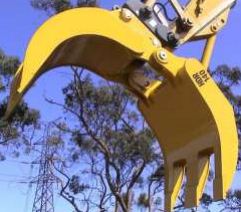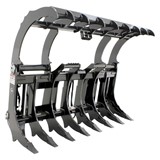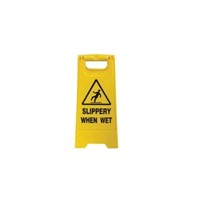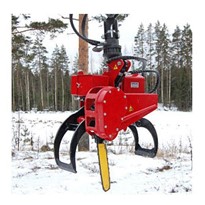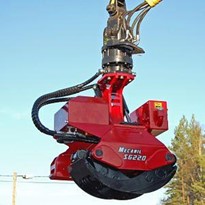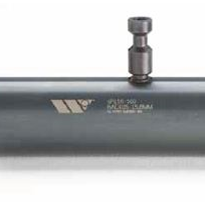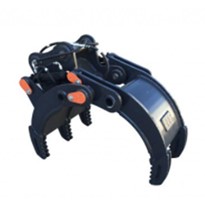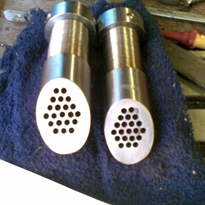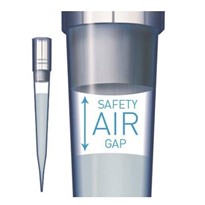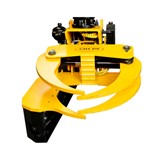Trying to work out the difference between one manufacturer's product and another manufacturer's product can be difficult and lead to uncertainty as to whether you have made the right choice.
Here are seven tips, which if followed, will help you make sure that you select the right grapple for you.
Tip #1: Buy a grapple that suits your application
The first thing to consider is how you want to use the grapple.
Do you need a tough all-rounder that can stand up to the heaviest workload or will it have a single application such as sorting waste?
Do you need a grapple that can be easily interchanged with other attachments or will it be permanently fixed to your excavator?
Do you need the versatility of a hydraulic grapple or will a manual grapple do?
Your answer to these types of questions will help your supplier in determining which product range will be most suitable to your needs.
Within the Embrey Attachments range of grapples the following models have a variety of applications.
|
Series |
Application |
|
HDR Series Heavy |
Industrial, demolition, scrap handling, rock handling and land clearing |
|
HD Series |
Demolition, site clean-up, land clearing and general material handling |
|
TR Series |
Land clearing, raking and stacking burn piles, demolishing wood and brick structures and rehandling bulky, loose materials |
|
TW Series |
Handling waste, refuse and large volumes of loose materials |
|
EWG Series |
Shifting and sorting waste in recycling yards and waste transfer stations |
Tip #2: Buy a grapple correctly weighted for your machine
The size of your excavator will impact upon the size and weight of the grapple you purchase.
As a rule of thumb an excavator can handle approximately 10 per cent of its weight hanging off it as a third member (attached to the dipper arm).
In the case of a grapple, this 10 per cent calculation will also include the material the grapple is carrying.
Remember that if you want a hydraulic and/or rotating version of the grapple, it will add weight to the attachment which may result in the need to buy a smaller sized grapple due to weight considerations.
Tip #3: Buy a grapple made from high tensile steel
There can be a huge difference in the material used in the grapple's construction.
Some manufacturers will use cheaper, lighter steel, or even mild steel, in order to keep their prices low whilst others will use high tensile, abrasion resistant steel. The major impact the material will have is in the durability and lifespan of the grapple.
If you are looking for a cost effective, short-term fix go for the cheaper model, but if you are looking at the grapple as a long-term investment in your business be prepared to pay a bit more upfront for the high tensile model.
Tip # 4: Buy a grapple with a longer pad mount
The pad mount is the piece that is welded to your dipper arm and used to pin the "stiff arm" or "stick" in place when using a mechanical grapple.
There is a lot of force impacting through the "stiff arm" and onto the pad mount which creates a stress point. The longer the pad mount the better equipped it is to disperse the stress over a greater distance.
By using a smaller pad mount the stress is absorbed in a more concentrated area which increases the likelihood of cracking your dipper arm.
Tip #5: Buy a grapple with quality pins and bushes
The type of pins and bushes fitted will largely impact upon the grapple's reliability. Pins can be made from a range of different material, most commonly either high tensile or mild steel.
At a minimum you want a grapple with solid pinsal though solid high tensile pins would be more desirable. High tensile pins and heat treated bushes will maximise longevity with regular greasing.
Tip #6: Buy a grapple that shields the hydraulic cylinder rod
Grapples need to be hard working and capable of taking a knock. When buying a hydraulic grapple it is best to look for one that has been designed to protect the cylinder rod from damage.
Although there can be no 100 per cent guarantees that the cylinder rod won't be damaged there are hydraulic grapples in the marketplace that have been designed to minimise the likelihood of this happening.
Tip #7: Buy a grapple with abrasion resistant tips
The hardest wearing part of any grapple is the tips so it is important to ensure that the tips on the grapple you choose are made from abrasion resistant material.
Although all tips will eventually wear down material such as Bisalloy 400 offer long life expectancy in high impact abrasion applications.
We trust that these tips will give you a little more knowledge in what to look for when buying a new grapple and help you ask the right questions when speaking to any potential new supplier.


